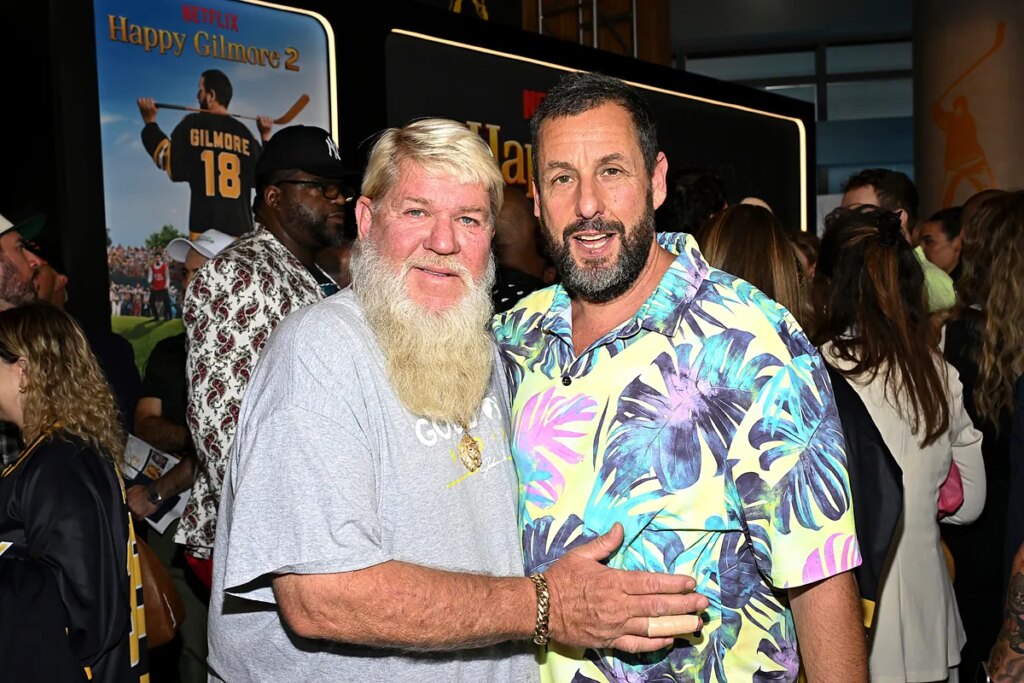When Happy Gilmore debuted in February 1996, Adam Sandler was a rebellious SNL alum mocking golf’s elitism-a time when Tiger Woods hadn’t yet turned pro and legends like Lee Trevino reluctantly filmed cameos, later admitting he “hated the movie’s crass nature”. This scrappy production, shot on a modest budget, defied expectations to become a cable TV staple, transforming Happy from a man-child joke into an anti-establishment icon.
The film’s guerrilla spirit extended behind the scenes: Sandler’s stunt double, Allen Covert, executed the character’s signature hockey-check swings and rage-fueled tumbles, grounding the absurdity in physical authenticity. Three decades later, Happy Gilmore 2 mirrors golf’s seismic shift from “niche sport for gatekeeping old white men” to a mainstream phenomenon fueled by Netflix’s Full Swing and Gen-Z-friendly stars like Rory McIlroy.
Director Kyle Newacheck-a self-proclaimed Sandler disciple-notes the sequel’s timing aligns with golf’s “uncharted wave of popularity”. This cultural pivot enabled unprecedented access: Where Trevino was the only PGA player in the original, legends like Jack Nicklaus and current titans (Scottie Scheffler, Bryson DeChambeau) flocked to the sequel, reflecting both Sandler’s clout and the sport’s hunger for self-satire.
The sequel weaponizes nostalgia with surgical precision. Returning characters-Shooter McGavin (Christopher McDonald), Hal L. (Ben Stiller), and Virginia (Julie Bowen)-anchor a plot where Happy, now a broke alcoholic after accidentally killing his wife with an errant drive, seeks redemption by funding his daughter Vienna’s ballet dreams (played by Sandler’s real-life daughter Sunny). Flashbacks resurrect Bob Barker and Carl Weathers via resealed footage, while Chubbs’ son Slim (Lavell Crawford) inherits his father’s prosthetic hand-a tribute weaving loss with legacy.
Happy Gilmore 2 refracts golf’s real-life fractures through Maxi Golf, a rival league run by “craven billionaire” Frank Manatee (Benny Safdie). With surgically enhanced players and mini-golf obstacles, it satirizes LIV Golf’s disruption-yet Sandler avoids vilification. As co-writer Tim Herlihy insists, the goal was unifying the sport: “They’re all on the same team, pulling for the same thing”. This metacommentary culminates in a climactic PGA vs. Maxi showdown, where Happy teams with McIlroy and Scheffler to save “regular golf” through chaotic collaboration.
The sequel’s staggering 27+ cameos-from Travis Kelce (as a honey-slathered hotel employee) to Post Malone and Eminem-were orchestrated by producer Gabe Mumm, who leveraged his Full Swing connections. Mumm recalls reading the script while “laughing out loud for 90 minutes,” then mobilizing golf’s elite . This star power transcends gimmickry: Bad Bunny’s turn as caddie Oscar adds heart, while Ken Jennings nods to Bob Barker’s iconic brawl. Even Sandler’s late Grown Ups co-star Cameron Boyce appears via a hidden Jessie clip.
Cinematographer Zak Mulligan modernized the visual language, using Sony Venice 2 cameras to transition from “loose, handheld intimacy” to Maxi Golf’s “vibrant spectacle”. Yet the soul remains unchanged: The rain-soaked hospital sequence, lit like a “gothic cathedral” with lightning strikes and 50-foot cranes, echoes the original’s operatic absurdity.
Read the full article here

